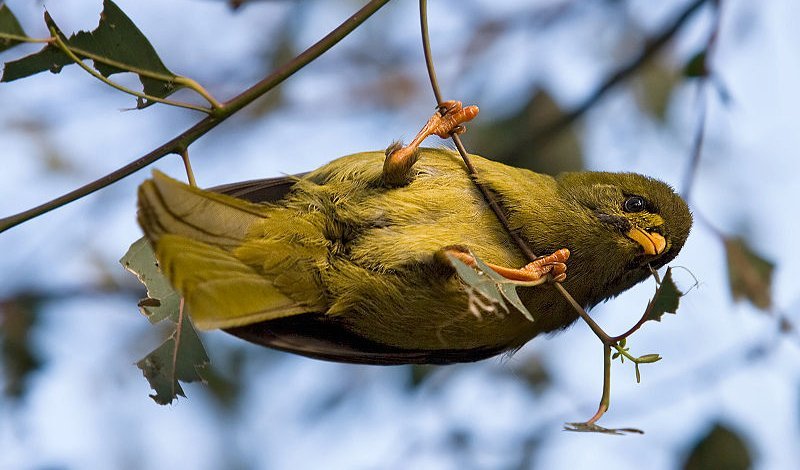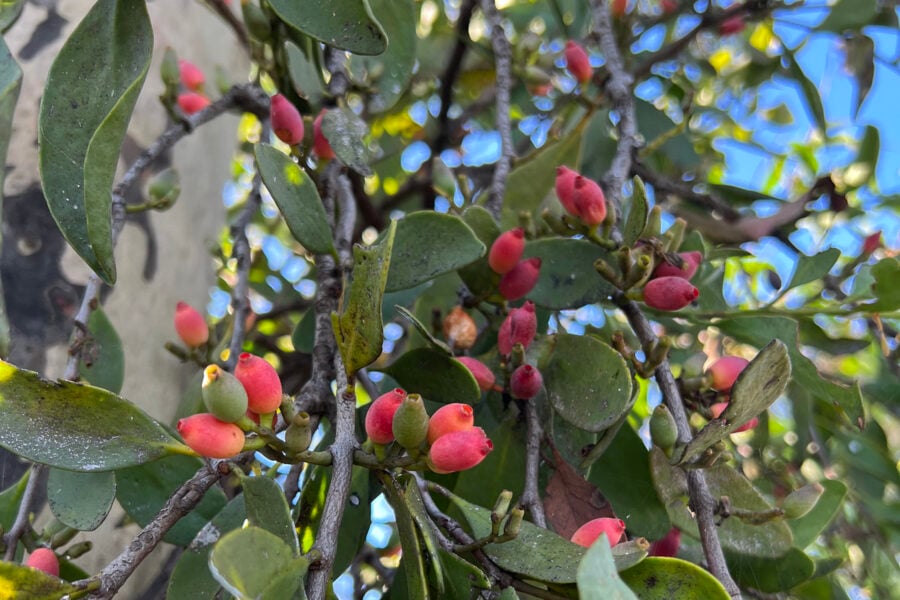Birds that farm

IN SO MANY ways these birds are exceptional. They form immense colonies in eucalypt forests from which they drive away most other birds. Henry Kendall’s beloved poem, Bellbirds, portrays them as silver-voiced darlings of daytime, ‘softer than slumber, and sweeter than singing,’ but their ‘tink’ notes threaten violence. By signalling forest possession from dawn to dusk, 365 days of the year, a bell miner colony probably broadcasts the world’s most constant animal noise.
Bell miners are especially hostile towards other birds that like lerp – the sweet protective coverings produced by psyllid bugs. These aphid-like insects imbibe sap in large amounts and excrete some of it, in a congealed form, to make coverings they shelter beneath. Lerps are only about 7 millimetres long but they are plentiful and nutritious, containing sugar and starch, and many birds eat them.
Bell miners qualify as farmers because they often lever the lerp off without harming the bug, so that it produces another. The birds are like farmers that guard a flock of sheep and periodically remove the wool. The psyllids multiply under guardianship, but that has a downside.
The bugs reach such high numbers they weaken and often kill their host trees by removing too much sap. Bell miners are like farmers who overstock and degrade their pasture.
In a region extending from southern Queensland to Melbourne, large tracts of forest have died from what is called BMAD – bell-miner associated dieback. Forestry managers have been forced to mark down estimates of future timber production.
Oddly, the problem was not recognised until the 1990s. It typically emerges in sites that were logged and have a thick layer of undergrowth that provides good miner nesting sites.
Miners often nest in lantana, a dense weedy shrub that can be removed to deter them. In some forests young rainforest is growing up under dying eucalypts and a welcome habitat transformation may take place. Although many studies on BMAD have been conducted, much remains to be learned about how to limit it.
Australia has many ecologically influential birds and our lerp-farmers are a dramatic example of that.




